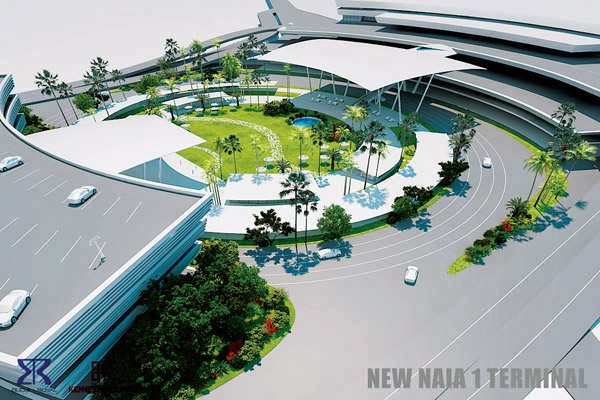Rehabilitation of NAIA Terminal 1 Underway
The rehabilitation of Ninoy Aquino International Airport Terminal 1 is finally under way after lengthy delays and complaints earned the airport a reputation as the "World's Worst Airport" for the last two consecutive years in a row.
The Department of Transportation and Communications revealed last month that the Bids and Awards Committee had awarded the P1.3 billion civil works contract to D.M. Consunji, Inc. The contract covers the architectural and structural construction works along with the mechanical, plumbing, electrical, and fire components.
The Aquino administration previously approved a P1.1 billion budget for the structural and aesthetic improvements to Terminal 1 with the intention of preparing it for an expected surge in visitors and tourists from Manila's hosting of the 2015 Asia Pacific Economic Cooperation forum.
According to Joseph Abaya, Transportation Secretary, the APEC organizing committee gave the Philippine government until December 1, 2014 to complete the rehabilitation. "We are really behind the schedule but we will try our best to comply," said Abaya.
Of the P1.1 billion rehabilitation budget, P500 million is allocated for aesthetics and interior design of the airport terminal while P300 million will be used for the construction of a rapid exit taxiway that will alleviate runway congestion and minimize delays of incoming and outgoing flights. Another P340 million will be used for improvements to the structural integrity of the terminal building. P20 million has been dedicated exclusively to the repair and rehabilitation of all 72 toilet facilities in the terminal including fixing lavatories, water closets, urinals, and amenities.
"This rehabilitation is long-overdue after we've been highly criticized," said Abaya. "With the group of internationally acclaimed designer Kenneth Cobonpue, architect Royal Pineda, and designer Budji Layug on board, we could really make NAIA nicer looking."
Terminal 1 was put into service in 1981 with an original design capacity of 4.5 million passengers per year. In 2011, the terminal well surpassed that figure handling 7.3 million passengers. The terminal, which serves international flights except those of local carriers, was last renovated in 1996. It has since been an on-going source of complaints not limited to "smelly bathrooms, long lines, and rude staff" with the terminal being described as "particularly crammed."
Developer DM Consunji Incorporated received its official Notice to Proceed on January 6. According to the notice, work must commence within 15 days of receipt and that the work needs to be completed within 360 calendar days.
Meanwhile, the Philippine government inked a $45 million deal with the Takenaka group to complete NAIA Terminal 3 that is currently only 52 percent operational due to a lack of internal systems. Upon completion, the terminal will have the ability to serve up to 33,000 passengers daily at peak operation or approximately 6,000 passengers per hour. The terminal is capable of servicing 28 aircraft simultaneously.
The Philippine government has asked Takenaka Corporation to prioritize the installation of CCTV systems in Terminal 3 to improve the security and surveillance systems in the airport. "We would ask them if the CCTV component of the contract can be installed immediately," said Abaya. He added that Takenaka is expected to complete the supply, installation, and commissioning of the 23 deficient systems in Terminal 3 by July 2014. These systems include CCTV, baggage handling, flight information display, fire alarms, local area network, and passenger loading bridges.
Once fully operational, Terminal 3 is expected to begin accommodating certain flights that have been operating from Terminal 1. The Manila International Airport Authority recently submitted a letter to Singapore Airlines, Cathay Pacific, KLM, Emirates, and Delta Airlines asking them to transfer operations to Terminal 3 in an effort to de-congest the ageing Terminal 1.








Exceptionally qualified liquor enslavement treatment guides are costly, and to pay for the most excellent treatment, you should follow through on a greater expense. The Holistic Sanctuary
ReplyDeleteNormally, the individual who performs physiotherapy is known as an actual specialist. Be that as it may, there are additionally different experts who play out a few comparative practices, similar to bone and joint specialists or guardians. physiotherapist Cork
ReplyDelete